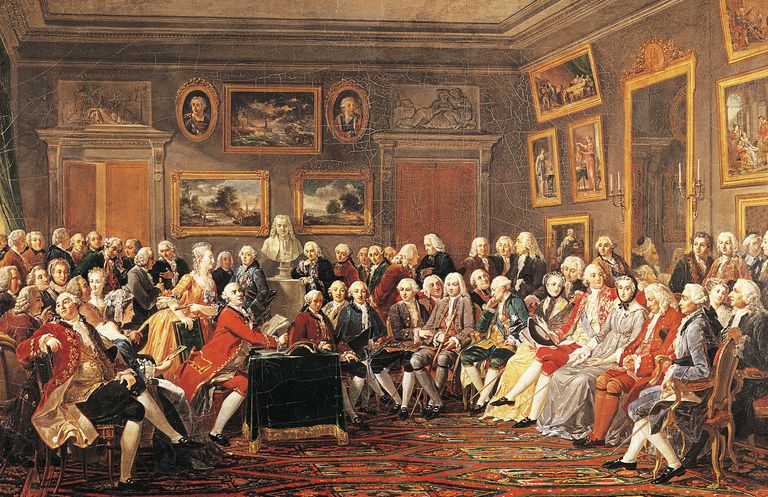Introduction
The 18th Century can be dubbed “the Age of Enlightenment” as it was marked by French philosophers such as Voltaire, Rousseau or Diderot (the Encyclopédie was published in 1761).
The Enlightenment is characterized by the belief of the natural goodness of man: man is perfectible, it is the idea of progress obtained through the use of reason.
Since man is naturally good, all bad things come from society: if we could fight prejudices and oppressive social institutions, man would be better. It’s a question of education: political and social reforms would bring man happiness. These are the principles of the French Revolution.
The situation is different in the United Kingdom. The revolution had already been made: the “Glorious Revolution” of 1688 established a parliamentary monarchy but it was not a democracy since you needed to be rich to go to Parliament.
John Locke, a famous British philosopher, influenced the notion of parliamentary democracy. He was a predecessor of the Enlightenment but his ideas were only applied in America after the War of Independence (1776-1782).
The American Constitution was applied in 1789. In the USA, there is a republican government with a president and a principle of equality in front of the law: “Everyone has the right to life, liberty and the pursuit of happiness”. There is a truly optimistic belief in man and happiness, and progress and reason.
The end of the 18th century saw an evolution: the development of the rational and the irrational. There were general changes in taste in arts in the 1750’s :
- rococo and its myriad of details
- primitivism (more simple) and its two sides: neoclassicism and its imitation of Greek and Latin architecture (strict and rational), and the Gothic revival.

Primitivism
Primitivism is connected to a new vision of nature. Instead of being addicted to laws, nature became a sentimental reference. It helps you meditate, and find yourself – it’s a new conception of life.
Nature is not a rational entity any longer but it is sentimentalized. This shift can also be seen in gardening: French gardens were less controlled, and more spontaneous than British gardens for example.
Cult of “sensibility”
Feelings were seen as an essential part of human nature, that should be expressed rather than repressed:
- romanticism is based on the expression of feelings
- humanitarianism is the sentimental promotion of feelings and asks how feelings affect our minds through compassion for the poor and unhappy. Jean-Jacques Rousseau in La Nouvelle Héloïse glorifies passions and feelings, and as such can be considered a pre-romantic writer.
- the development of a new type of psychology: our sensations influence our minds.
The Rise of the Novel
During the 18th century, the modern novel came into being and became the most important genre in literature.
The novel is characterized by its realism and simplicity :
- the characters are not noble but middle-class characters
- it is often presented as autobiographies, letters or journals: it looks ordinary, the language is not difficult, and the style is simple – all that make novels very realistic.
Daniel Defoe wrote Robinson Crusoe (1719) and Moll Flanders (1722). Defoe created a new way of thinking. He was Protestant and took sides for the Protestant capitalistic values, advocating thrift and perseverance.
Samuel Richardson, who wrote Pamela (1740) and Clarissa (1748), was a pioneer in the sentimental novel and psychological novel.
Henry Fielding, who wrote Joseph Andrew (1742) and Tom Jones (1749), was a specialist in comedy and parody. His books are anti-sentimental.
Lawrence Sterne, author of Tristan Shandy (1759), showed the artificiality of the novel. He questioned the conventions of the genre through the use of digressions, self-referentiality and puns.
Two traumatic events can explain the context of Gothic and Romanticism: the French Revolution and the Industrial Revolution.
Synopsis » 19th Century Literary Movements
- The 18th Century: the Age of Enlightenment
- The Gothic and the Fantastic
- The 19th Century : Romanticism in Art and Literature
